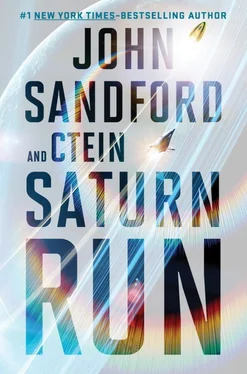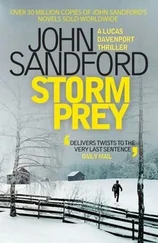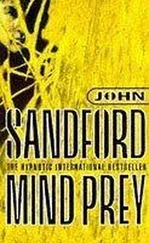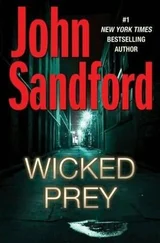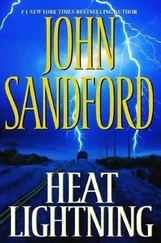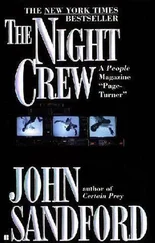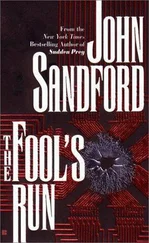With the very faintest snick, the grappler on the egg latched onto one of the docking sockets that were all over the can’s skin. This particular socket was adjacent to the Chuck’s Eye instrument hatch. Once tied in, Martinez ran a last confirming test on the safety and security cameras. Everything inside and out was recorded during one of these house calls, because you never knew when a detail you missed might just save the job… or your life.
“We show you docked,” Bob said. “Good job. Barely a jiggle.”
“That’s why you hired a pro,” Martinez said. “You looking at the vid?”
“Yeah, we’re running it against the last scan, and so far we see no changes, no anomalies,” Bob said. Three seconds of silence. “Okay, the scan is finished, we see nothing at all on the exterior.”
“Good. Go ahead and cut the juice.”
“Cutting the juice: juice is cut. You’re clear.”
____
Killing the SSO’s power was a safety precaution, not for Martinez, who was well isolated and insulated in his egg, but for Chuck’s Eye: an accidental short or surge during servicing could result in one of those million-dollar repairs the groundhuggers were praying to avoid.
A moment later, a ground-based scope specialist named Diana Pike, whom Joe had never met, but with whom he often worked, called back and said in her familiar southern accent, “We’re good, Joe. Want to look for that tic, first?”
“Hey, Di. Yeah, I’m putting some pucks out now.” Martinez used a spidery remote arm to drop a few micro-seismometer pucks on the can’s skin and the outer case of Chuck’s Eye. The bottom of the pucks had a layer of an electro-phosphoprotein adhesive, a synthetic based on the natural adhesive used by barnacles. With a tiny electrical current running through the adhesive, it would stick to almost anything; when the current shut off, the adhesive effect vanished. They were called Post-its. What that had to do with yellow pop-up reminders on a workslate screen was anybody’s guess.
“Okay, Di, we’re set up here,” Martinez called. “Give me a rattle.”
“Here y’all go,” Pike said. “Three-two-one. Now.”
Two opposing thrusters fired on the can, each for just a tenth of a second and so closely spaced that a human eye couldn’t have told them apart. The can shuddered.
“Okay. We’re cycled. You see that?”
Martinez said, “Yeah, yeah, I see it.”
____
Martinez was watching his monitor readouts—the people on the ground were seeing the same thing—where the reports from the micros were popping up, giving him a directional reading on the vibration. It was near the surface of the superstructure, which was good, but outside the seismo array. “I’m gonna have to juggle some pucks,” Martinez said. “Wait one.”
He moved his micros, and called back to Pike: “Give me another cycle.”
“Cycling, three-two-one. Now. Cycled.”
Martinez looked at his monitor and called back, “It’s right near the surface. I’d say it’s between walls. I’m repositioning the pucks and moving a scope out to take a look.”
“It’s the insulating foam.” Pike was hopeful.
“Probably. I’m moving the pucks…”
Another shot and the micros gave him a precise location, within a half centimeter of the source of the vibration. He moved a macro lens in and looked at the surface of the observatory. “There’s no external defect,” he said.
“Good,” Anderson said. If it had been a micrometeorite, the repairs could have been a bigger problem. They’d never had one penetrate both skins, but the possibility was always there.
“Gonna cut a hole,” Martinez said.
The process took an hour. Martinez drilled a three-millimeter hole in the meteorite barrier, then peeked inside with a fiber optic. As they’d suspected, some of the foam used as insulation between the two walls had shaken loose on Chuck’s Eye. There’d probably been a fracture during construction, or one created when the can was boosted into space; years of heat-cold cycles had finally shaken it loose. Martinez gave it a new shot of foam, specially formulated for this precise repair—they’d done three others just like it—sealed it with a carbon-fiber patch, and was done.
That had been the tricky bit. The next part, a monkey could do:
“Breaking out the camera package,” Martinez said.
“Okay. Got you down for the package extraction.”
____
The new package for Chuck’s Eye was less a single instrument than a spider’s-head complex of primary and secondary eyes, operating at all wavelengths from the mid-infrared to the far ultraviolet. Chuck’s Eye was like the scout that ran ahead of an expedition in the Old West, taking in a wide field of view and maintaining a lookout for unusual objects and events. The bigger, more impressive Eyes would do the research that mattered, but Chuck’s Eye would be the first to catch a new supernova or gamma ray burst, or whatever else might show up.
The cameras were modular and self-contained, and the new camera module looked exactly like the old one. Joe yanked the old one, slipped the new one into the rack, flipped the locking clamps, and pinged Anderson:
“I got the old camera package out of the rack and the new one seated. It looks fine. Bob, you can power up again. Everything looks good here.”
“Looks good here, too. Powering up.”
And it was good. The repairs fell into the “nothing-at-all” category. Another of the mission scientists came on and said, “That’s nice work, Joe. We’ve run fifty cycles, got no vibes, and the new camera is online. You can go on home.”
“I’m gone,” Martinez said.
On the way back, he grabbed a bulb of proper caffeinated brew and pulled the heat tab, ate a few crumb-proof peanut-butter-and-cheese crackers, and contemplated the prospects of a proper meal. He’d been invited to dine with the station commander, Captain Naomi Fang-Castro, and her fiancée, Llorena whose-name-he-couldn’t-remember. Better look that up before I commit a major faux pas, he thought. The captain and her first wife had divorced two years prior. The ex and their two college-age kids were on Earth; the ex hadn’t been much for space. Fang-Castro was committed to the sky. Probably why he and the commander got along so well, Martinez mused… and probably why they were both divorced.
He took a call from the station, where Elroy Gorey, whom the groundhuggers called a farmer, was feeding the plants, or monitoring the nutrient cycles on the biotech program, depending on your need for long words.
Gorey had a Ph.D. in botany and did a little plumbing and programming on the side, and was good with circuit boards. “That honey from Starbucks called,” he said. “She wants to know if you forgot about your coffee.”
“Nah, I’ve got a bulb here, but it’d be nice to have a fresh espresso waiting for me.”
“I’ll tell her,” Gorey said. “I think she wants to know me better.”
“I beg your pardon, there, Elroy, you’re more of a wingman type.”
The honey worked in Seattle, and hooked up to the station via an audio/video link that allowed her to make coffee for station personnel through an automated coffee machine. The face-to-face chatter was supposed to improve morale, and mostly did. Station personnel suspected that the baristas, male and female alike, had been chosen more for their good looks than their coffee-making abilities.
Back behind Martinez, at the can, Chuck’s Eye ran through its preprogrammed diagnostic sequence, firing off a series of wide-field photographs and forwarding them to the ground station at Caltech, in Pasadena, California. Once they’d been vetted, by an intern, for their utter routineness, Chuck’s Eye would be handed back to real astronomers for real work.
Читать дальше
